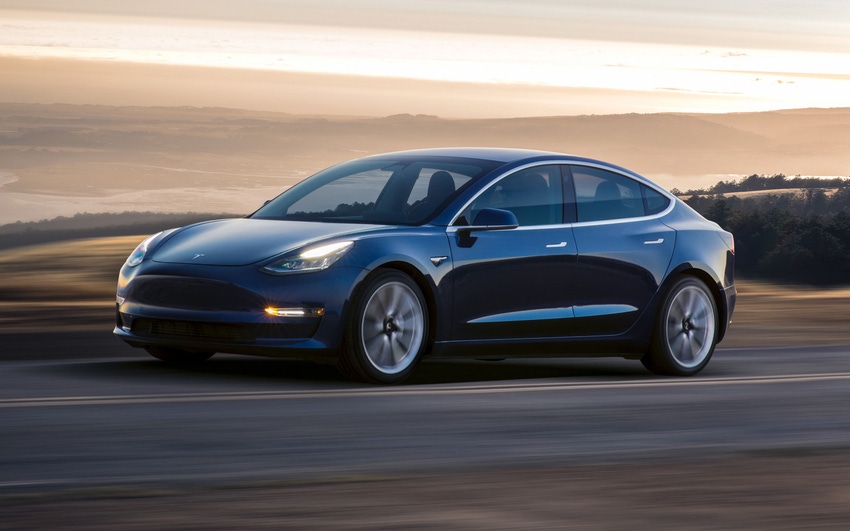What Happens If EV Tax Credits Are Scrapped?
Experts say that electric car sales will plummet if tax incentives are taken away now.
November 3, 2017

News yesterday of a potential elimination of the federal EV tax credit rankled automakers, many of whom worried that it would be a setback to the industry-wide effort to bring affordable electric cars to the market.
The potential elimination of the $7,500 credit, revealed yesterday by House Republicans who are crafting a major overhaul of the US tax code, would most likely slow sales of EVs and force automakers to further cut prices on vehicles that are already losing money, experts said.
“Every time we’ve seen incentives taken off these vehicles, it has hurt sales quickly and drastically,” Brett Smith, a program director for the Center for Automotive Research, told Design News. When Georgia removed a state-level $5,000 incentive in 2015, sales plummeted, Smith said.
The vehicles most at risk would be the new breed of lower-cost electric cars, such as the Chevrolet Bolt and the Tesla Model 3. On those vehicles, a $7,500 tax credit amounts to about 20% of the overall cost of the car. “A big part of the financial argument for a Model 3 was the $35,000 price point,” noted Sam Abuelsamid, senior analyst for Navigant Research. “After incentives, it was $27.500. If you take that back to $35,000, even for mainstream customers, the price is on the high side.”
|
Sales of new affordable electric cars, such as GM’s Chevy Bolt, would be adversely affected by the loss of federal tax credits. (Source: Chevrolet) |
Potential removal of the federal tax credit is hardly a surprise for automakers. The credit for battery-powered cars was originally announced by the Obama Administration in 2009, but it has been a target of political speculation since the start of the Trump presidency. Moreover, many of the biggest electric car suppliers – Tesla, General Motors and Nissan – have been approaching the end of the federal incentive program. As the program stands today, incentives apply to each manufacturer’s first 200,000 electric and alternative-fuel vehicles. After that, they are gradually phased out. Most experts expected the big electric car sellers to reach the 200,000 threshold in 2018 or ’19.
Still, manufacturers continue to need the program because many are not yet breaking even on electric cars. A report from Bloomberg late last year contended that GM is losing $9,000 on every Chevy Bolt it sells. GM and other automakers must continue to sell EVs, however, in order to meet zero-emission vehicle mandates in California and nine other states.
Without a federal incentive, automakers will most likely have to drop the price of their electric cars and swallow the losses, offsetting them through the sale of gasoline-burning vehicles.
“The one it’s most challenging for is Tesla,” Abuelsamid told Design News. “The other automakers can afford to cut their prices and subsidize those vehicles. But Tesla doesn’t have that option. They don’t have any profitable vehicles they can us to offset the losses on their EVs, because all they have is EVs. Whereas, Ford can push more F-150s in Texas and use that margin to pay for the sale of Focus Electrics in California.”
To date, Tesla, Inc. has struggled to make profits on the sale of its electric cars. Earlier this week, the fledgling company announced a whopping $671 million loss for the third quarter of 2017, its largest quarterly deficit ever.
Opponents of the tax credit say that the incentives generally go to wealthy purchasers of premium vehicles. A 2011 report showed that the average income for a buyer of the plug-in hybrid Chevy Volt was $175,000 a year.
Automakers argue, however, that now is a bad time to withdraw the tax credits, after some of them have already invested more than a billion dollars in the development of the technology. The Alliance of Automobile Manufacturers, which represents GM, Toyota and Volkswagen, said yesterday that elimination of the credits would make it even “more challenging for manufacturers to comply with electric vehicle mandates in place in 10 states.” A GM spokesman added that the giant automaker would "work with Congress to explore ways to maintian this incentive."
In a letter to the House Ways and Means Committee, the Electric Drive Transportation Association begged lawmakers to “allow the credit to run its course, as designed, to achieve its intended goals.”
Experts predicted that EV sales would slow to a crawl if the tax credit is eliminated. “These are great vehicles,” Smith told us. “But because of their cost and some of their characteristics, they need incentives in order to be moved off the lot.”
Read More Articles on Automotive Technology
10 of History's Greatest American Pickup Trucks
12 Vehicle Infotainment Systems That Distract Drivers
The EV Trend Is Now Irreversible
Toyota, Denso Team Up on EV Technology
GM to Produce 20 New Electric Cars by 2023
Senior technical editor Chuck Murray has been writing about technology for 33 years. He joined Design News in 1987, and has covered electronics, automation, fluid power, and auto.
Design of Connected Vehicle Architecture |
|
About the Author(s)
You May Also Like




